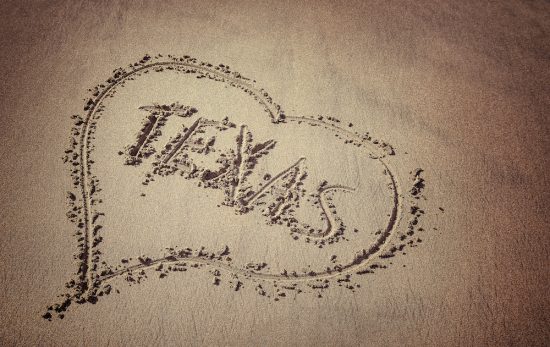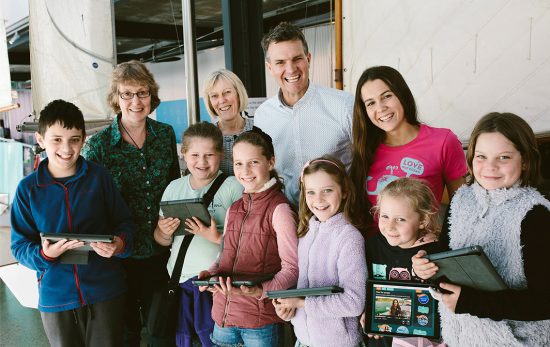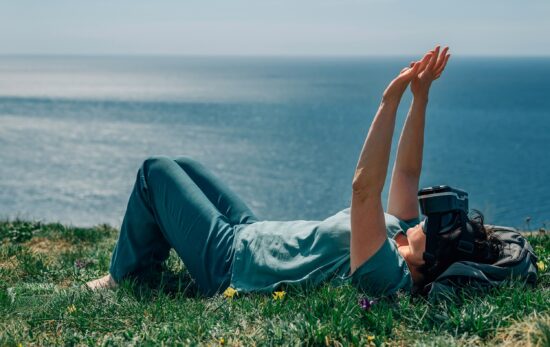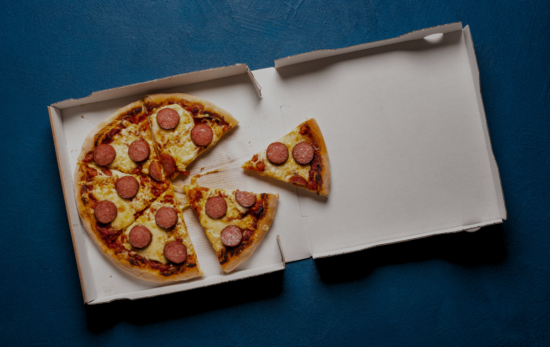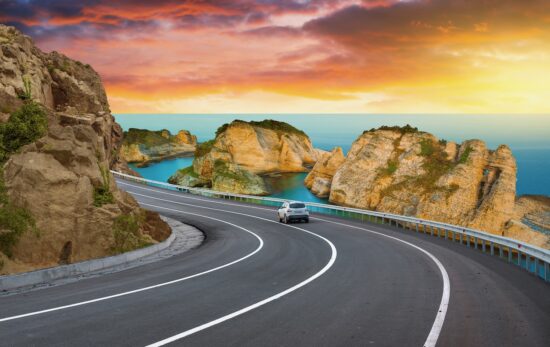
Written by PADI AmbassaDiver, Jack Fishman
Much like the thick limestone structure of a bountiful coral reef ecosystem in the face of a category 4 hurricane, the resilience of the people in south Florida is powerful. When I moved to the Keys three years ago, I was struck by the passion and dedication those living here have for the beauty of the land and sea surrounding us. Even before Irma, this spirit offered endless opportunities to forge community bonds and joint efforts to sustain and preserve the Keys and environs.
We certainly need that commitment now. After the storm waters have cleared and the winds subsided, we are left with damaged infrastructure and homes, vegetation scattered across roads and property, and debris tossed everywhere by the storm. The damage varies and each section of the Florida Keys fared differently – sometimes by mere streets. The media has portrayed vast destruction and loss, and sadly that is true – just not everywhere. Key Largo, where I live and work, suffered the effects of Hurricane Irma but luckily escaped the full brunt of the storm. Oceanside homes and businesses felt the effects of flooding and high winds, but structures in Key Largo and the Upper Keys generally are still standing proud, with much of the damage quickly assessed and repaired as we eagerly await the return of residents and tourists alike.

Sadly, so many in the middle and lower Keys (and even in the upper Keys) were not so lucky. My good friend Caitlin Scott is one of them. Nonetheless, she expresses hope, which she sees every day in how the community has come together. As she says:
“Marathon, a little island just under 10 miles long, was full of tropical lush scenery, until 10 September when Hurricane Irma tore through this little slice of paradise. I headed down several days after reopening, almost a week after the storm, and was met with a sight that brought me to tears. My beautiful island I’ve called home for the better part of four years was now in shambles. Where beautiful palm trees used to stand is now replaced by brown remnants of the tropical environment. Driving around the town quickly opened my eyes to what type of power Mother Nature really has; homes in ruins, business destroyed and people left with nothing. Through all of this devastation and some of the saddest scenes I’ve ever witnessed, I saw something even more important: strength.”
Stronger than any hurricane has been the force of the community and first responders coming together. Responders from every corner of the country flocked to the Keys to help corral debris, restore power and help residents make their way back to some state of normalcy. Some left the safety of their own homes to come here and live in temporary arrangements to aid in the repair of our infrastructure. At my own home, an electric crew from Wisconsin was able to restore our power while I was sorting out debris in my yard. I got the chance to personally thank them and offered to take them diving; thankful that even in a small way I could show them how much we all appreciate what they have done for us. We in the Keys owe a huge debt and thank you to all the emergency personnel who have dedicated their time and incredible effort to help the Florida Keys start to work their way back from the wreckage. As Caitlin so eloquently notes:
“The Keys community is something anyone would be lucky to be a part of, and after this storm I’ve never been prouder to call this island home. Everyone quickly banded together to help each other in whatever way they could, even when they themselves had nothing. First responders came from all over the country just to offer assistance in any way they could. The phrase ‘Keys strong’ has quickly caught on during this rebuilding process and that could not be more accurate. The Keys community is made up of some of the strongest individuals I’ve ever met, and together we will rebuild our home into the tropical paradise we are known for. Phoenixes rise from the ashes and are reborn: well, Phoenixes have nothing on the Florida Keys; from the ashes we will rise, stronger.”

Now that the storm has passed, with fingers crossed that we (and everyone) stay out of the paths of the alphabet of hurricanes that continue to devastate, we at Rainbow Reef, the Key Largo-based dive center where I work, have been determinedly shoring up the dive center, getting things ready to take people back to the beautiful waters we love. As I am writing this, we are fully operational, as are so many other tourist destinations and shops throughout the Upper Keys, with rebuilding slowly working its way through the harder-hit middle and lower Keys. And all of us are paying particular attention of course to surveying the state of our reefs.
We are not scientific divers, but we are ambassadors to the sea and to the reefs we have come to know better than ourselves. As anticipated, the ocean off the coast has changed after Irma. Our Marine Conservation Co-Coordinator Shayna Cohen, our teams of divers and I have observed the effects firsthand. What we saw at first was truly heartbreaking – topography of the reefs changed significantly across the barrier system. A lot of recognizable coral structures we knew and loved had changed, or were simply not there. The sand has been displaced. Sea fans and soft corals are less plentiful; however, the substrate is there to support their return. Many high profile coral structures remain and offer surfaces and ground for new life to flourish. Algae (at first stripped bare) have started to return, enough to sustain many bottom-dwelling fishes. It will be important to see how that changes over time. Coral heads once again peek out from their tiny homes, raising their tentacles in the water, eagerly awaiting their next meal. Some are bruised and battered, yet some life has returned to the reefs. As we move into fall, the water temperatures should drop, helping to soothe the frayed nerves of the reef, allowing for a faster recovery than would the heat of summer.
It is important to acknowledge the destructive capabilities of a hurricane and the reality of the changes in reef structure, coral density and fish life. Overall we were very lucky. The reefs fared remarkably well given a hit from a category 4 hurricane. The wrecks in the Upper Keys are still standing proud, a few dings and missing pieces from the surge, but otherwise unscathed. Every day more fish return, with sharks, turtles and stingrays still cruising happily along the spur-and-groove formations of the reefs. When these amazing creatures welcome us back to their homes, we should dust off our fins, make sure our buoyancy is peak perfect, and treat the reef like an old friend who is very tired and needs some time to get back to its happy state. Let’s all do our part and give the reefs and animals the respect they deserve as we dive back into that beautiful watery realm.

The weeks and months after this life-changing event will be critical. As the reefs heal and change, the communities will continue the healing process as well. And we too will need to change in some ways. We need to be that much more careful to tailor our practices and even our livelihoods to protect our fragile ecosystems and prevent further decline of so many vital reef species. Shayna Cohen does a great job of describing the changes over time firsthand:
“A month ago, in an article I wrote for Project AWARE, I spoke about a brain coral I have seen wane in size and prominence over my time diving my favorite reef. After the hurricane that brain coral is no longer there, and the juvenile colonies I saw as beacons of hope are less abundant; but that doesn’t mean hope isn’t still there. Hope now comes in the ocean’s resilience and strength. However, hope also comes from the knowledge that humans, and especially divers, can play a role now more than ever to help heal our marine ecosystem. As visitors of the underwater world, it is our exciting duty to acknowledge and learn from the changes left by the hurricane, and to use that information to be more conscientious and contributing divers.”
We have our work cut out for us. For the past year, we at Rainbow Reef and others have expanded operations to include teaching and spearheading marine conservation efforts with a focus on safe and efficient marine debris removal efforts. We cannot predict all the changes and materials that have entered our ocean after this severe storm. With the help of PADI, Project AWARE Foundation, The LonelyWhale, 4Ocean, Stream2Sea The National Atmospheric and Oceanic Administration and many passionate individuals who make up our island family, we will be working hard to remove debris from locations throughout the Florida Keys. 4Ocean works very closely with our operation to ensure safe removal of marine debris, increased access for resources, and expanding perceptions across south Florida. We are endlessly thankful for their support.
Our well-trained and professional staff has already dived in many canals and lagoons to help remove odds and ends (big and small), and to restore accessibility to our waterways. This process will be ongoing, requiring time and dedication to ensure the debris does no further harm to our ecosystems. We will be coordinating with the community, government, professional and conservation organizations to use our skills to search for, aid in the logging of, and safely remove as much debris as humanly possible.

We encourage you to come down and see it all for yourselves. See what Mother Nature is capable of. Get involved. Participate in the effort to haul, remove, sort and catalog debris. Take the PADI Dive Against Debris Speciality with us and leave your experience with real meaning and training. On the reefs you must hone your skills, make your dives count. The PADI Peak Performance Buoyancy course is an excellent start to ensuring the continued health of our beautiful reef structures as divers explore the depths. Learn about Project AWARE’s 10 Tips for Being a Good Diver, which lay the groundwork to allow all of us to ease back into safe and productive diving practices that leave the reefs in better shape than we found them. These practices help us become more aware as we accept responsibility for our reefs and become part of the healing process, instead of simple observers.
Remember “Keys Strong,” our rallying cry for healing and rebuilding the Florida Keys. We are stronger together, and even stronger when those outside the Keys join us. We rely on tourism. We love to share our beautiful home with others and to work together to preserve what we have here. Thanks to the incredible work by first responders and infrastructure teams from all over the world, we are nearly there.

The best way YOU can help is to come visit us in the Florida Keys.
Dive shops are carrying divers to the reefs and wrecks, restaurants are open, motels are open, gas stations are open, bars are open and roads are clear. With the healing of our reefs around us, and restoration of the lives of residents and businesses here in the Florida Keys, we eagerly await your return.
